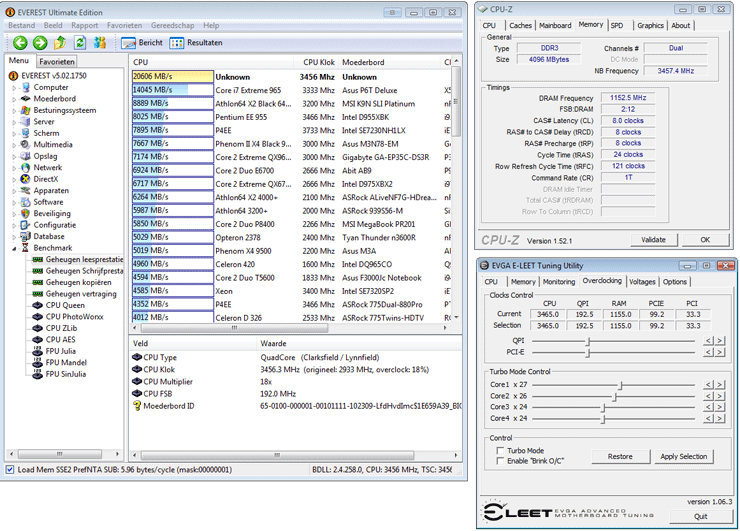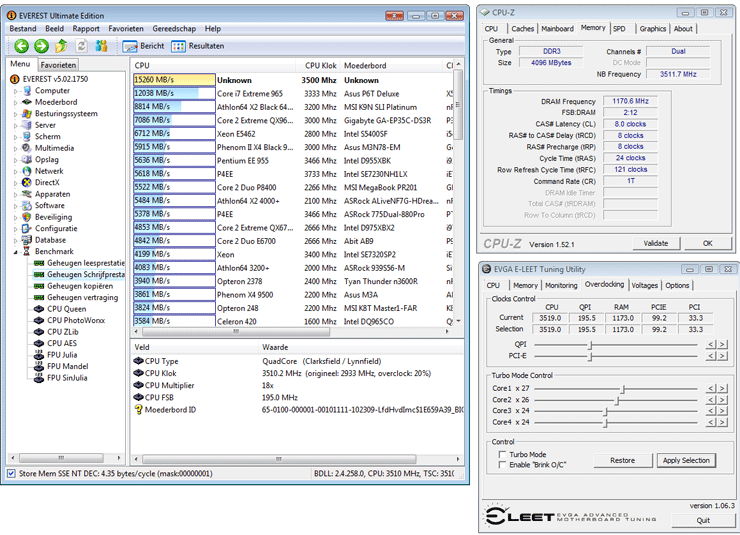DDR3-2200+ with Core i7 860/870 processor
A-Data's XPG Plus Series DDR3-2200+ with Core i7 860/870 processor
So we know that the Core i5 750 has a limited memory ratio of 2:10.
The reality is that if you seriously consider to purchase this memory, you really would like to have Core i7 860 or 870 processor as it will allow you to take that memory frequency up a little more as the limit is now raised to 2:12.
With the Core i5 750 processor you will run our of juice at roughly 2000~2100 MHz within a normal overclocking baseline. And that's just not the case with say a Core i7 860/870 processor. And here's why:

Do you see that XMP-2200 profile? If you have a decent motherboard, the BIOS will allow you to load up and apply that profile in the BIOS. You need the 2:12 memory ratio available though, and that's what the Core i7 860/870 processors allow.

So in the BIOS we can just flick on the XMP profile and at default we'll have the memory running at 2200 MHz C8:8:8:24 1T without any complex CPU overclocking. Our eVGA P55 Classified 200 motherboard reads the memory XMP profile and applies optimal settings accordingly. This includes and automated tweak of the multiplier now set at 18 times a 183 base clock = 3296 MHz on the CPU. Very close to the reference clock frequency (with Turbo mode enabled).

By having this as options -- we can now run tests in-between standard 1333 MHz and 2200 MHz a little more reliable (still subjective). This little tidbit will be all about the actual performance difference measured in-between the memory frequency.
Alternatively, of course, we can also manually overclock the CPU, base clock, voltages and end up at something like 183 MHz host / base clock --> 183x12=2200 MHz DDR3 memory as well.
So the previous chapter we have shown the results of an overclocked setup with Core i5 750. Now we'll focus on the performance benefit of DDR3 memory running at 2200 MHz at CAS 8:8:8:24 and a thrilling 1T command rate on the Core i7 870. In fact, we were able to take it even a little further. Check it out.

So here we have the memory screaming at 2300 MHz already. Still at CAS 8:8:8:24 T1 -- we did boost VDIMM voltage towards 1.7v at this stage. The result .. we now are closing in at 21.000 MB/s read performance !!

We upped the ante a little more and tried 2350 MHz at CAS8. And though stable for memory tests, this frequency vs. timings did start to crash in games. Since we don't want to push too far, our tests have simply been conducted at 2200 MHz. Let's check out some benchmarks.
